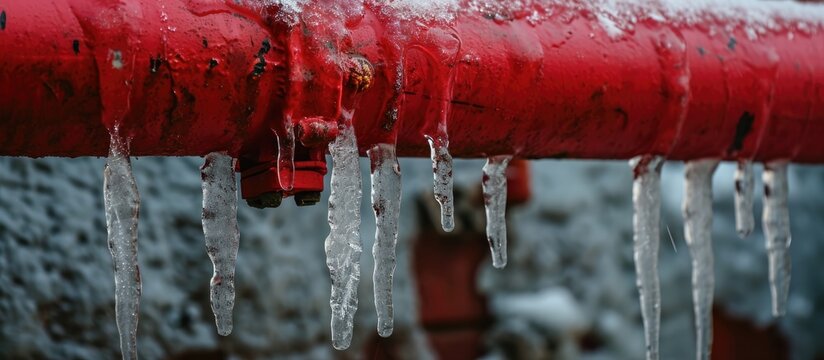Ways to Prevent Frozen Pipes in Winter: Professional Tips
Ways to Prevent Frozen Pipes in Winter: Professional Tips
Blog Article
This post below relating to 6 Ways to Prevent Frozen Pipes is exceedingly remarkable. Don't miss it.

Winter can ruin your pipes, specifically by freezing pipelines. Below's just how to prevent it from happening and what to do if it does.
Intro
As temperature levels decrease, the risk of icy pipelines boosts, potentially leading to pricey fixings and water damages. Comprehending exactly how to stop frozen pipelines is essential for property owners in cold environments.
Understanding Icy Pipelines
What causes pipes to ice up?
Pipes ice up when exposed to temperature levels listed below 32 ° F (0 ° C) for expanded periods. As water inside the pipelines freezes, it broadens, putting pressure on the pipe walls and potentially creating them to burst.
Dangers and problems
Frozen pipes can bring about water disruptions, home damage, and pricey fixings. Ruptured pipes can flooding homes and cause substantial structural damages.
Indications of Frozen Pipes
Determining icy pipelines early can prevent them from breaking.
How to identify icy pipelines
Try to find lowered water circulation from taps, uncommon odors or sounds from pipes, and noticeable frost on revealed pipelines.
Avoidance Tips
Protecting at risk pipelines
Wrap pipelines in insulation sleeves or utilize warmth tape to secure them from freezing temperatures. Focus on pipes in unheated or external areas of the home.
Home heating strategies
Keep interior rooms appropriately heated up, specifically locations with plumbing. Open up cupboard doors to allow cozy air to circulate around pipelines under sinks.
Safeguarding Exterior Plumbing
Yard pipes and exterior faucets
Separate and drain garden tubes before winter season. Mount frost-proof spigots or cover outside taps with insulated caps.
What to Do If Your Pipelines Freeze
Immediate actions to take
If you presume icy pipes, keep faucets open up to ease stress as the ice thaws. Use a hairdryer or towels soaked in hot water to thaw pipelines slowly.
Long-Term Solutions
Architectural changes
Take into consideration rerouting pipes away from outside wall surfaces or unheated locations. Include extra insulation to attics, basements, and crawl spaces.
Updating insulation
Purchase top notch insulation for pipelines, attics, and walls. Correct insulation aids maintain regular temperature levels and decreases the threat of frozen pipelines.
Verdict
Stopping icy pipes calls for positive measures and quick actions. By comprehending the reasons, indicators, and preventive measures, house owners can protect their pipes during cold weather.
6 Proven Ways to Prevent Frozen Pipes and Protect Your Home
Disconnect and Drain Garden Hoses
Before winter arrives, start by disconnecting your garden hoses and draining any remaining water. Close the shut-off valves that supply outdoor hose bibs and leave the outdoor faucet open to allow any residual water to drain. For extra protection, consider using faucet covers throughout the colder months. It’s also important to drain water from any sprinkler supply lines following the manufacturer’s directions.
Insulate Exposed Pipes
Insulating your pipes is an effective way to prevent freezing. Pipe insulation is readily available at home improvement stores and is relatively inexpensive. Pay close attention to pipes in unheated areas such as the attic, basement, crawl spaces, or garage. Apply foam insulation generously to create a buffer against the cold. You can also wrap your pipes in heat tape or thermostat-controlled heat cables for added warmth.
Seal Air Leaks
Inspect your home for any cracks or openings that could let in cold air. Seal any holes around the piping in interior or exterior walls, as well as the sill plates where your home rests on its foundation. Additionally, make sure to keep your garage door closed unless you’re entering or exiting. Leaving it open creates a significant air leak that can lead to frozen pipes.
Allow Warm Air Circulation
During cold snaps, it’s essential to allow warm air to circulate evenly throughout your home. Leave interior doors ajar to promote better airflow. Open kitchen and bathroom cabinets to help distribute heat consistently around the rooms. If you have small children or pets, be sure to remove any household chemicals or potentially harmful cleaners from open cabinets for safety.
Let Faucets Drip
A small trickle of water can make a big difference in preventing ice formation inside your pipes. When temperatures drop significantly, start a drip of water from all faucets served by exposed pipes. This continuous flow helps prevent the water from freezing. Additionally, running a few faucets slightly can relieve pressure inside the pipes, reducing the chances of a rupture if the water inside does freeze.
https://choateshvac.com/6-proven-ways-to-prevent-frozen-pipes-and-protect-your-home/

We were made aware of that editorial on 6 Ways to Prevent Frozen Pipes from someone on a different blog. Sharing is nice. You won't know, you might be helping someone out. Thanks a bunch for being here. Please check our website back soon.
Click Here Report this page